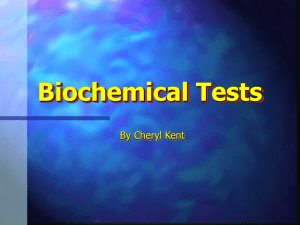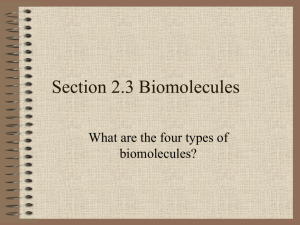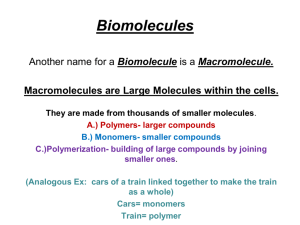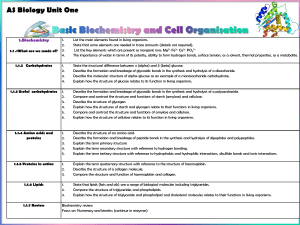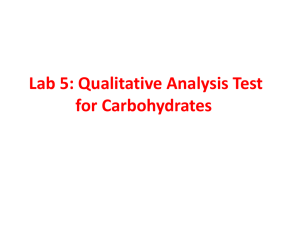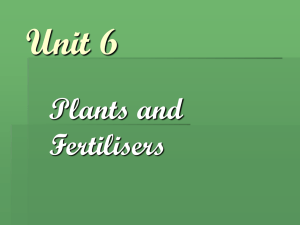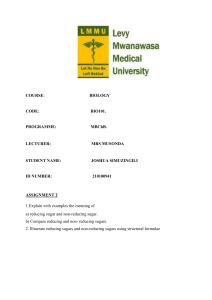File
advertisement
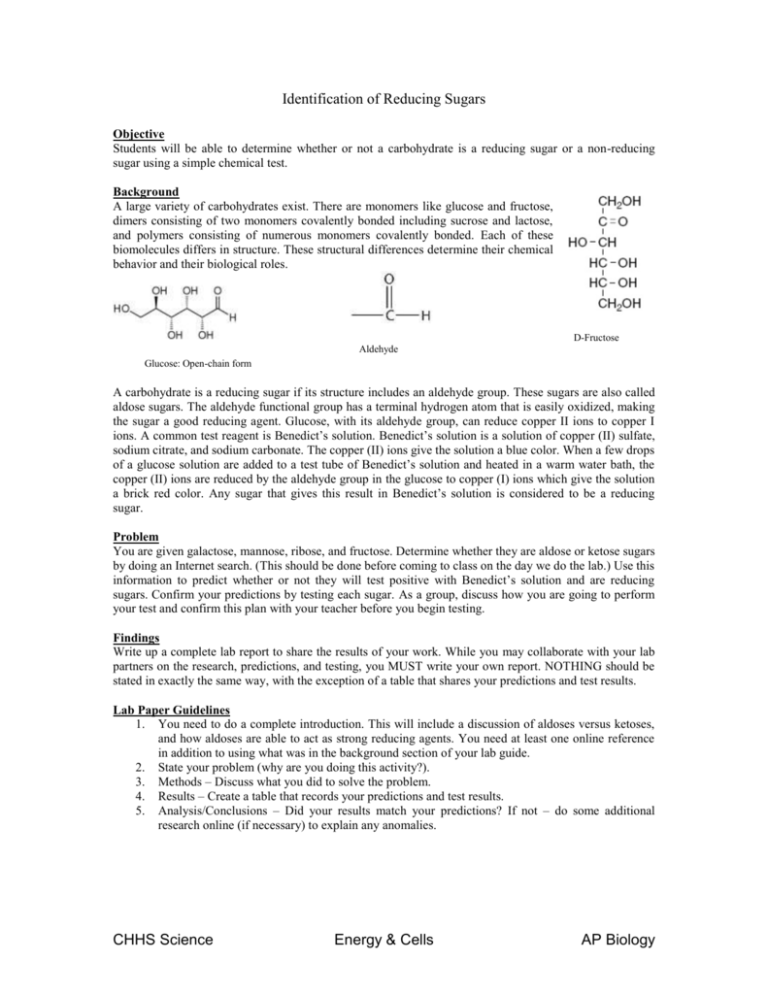
Identification of Reducing Sugars Objective Students will be able to determine whether or not a carbohydrate is a reducing sugar or a non-reducing sugar using a simple chemical test. Background A large variety of carbohydrates exist. There are monomers like glucose and fructose, dimers consisting of two monomers covalently bonded including sucrose and lactose, and polymers consisting of numerous monomers covalently bonded. Each of these biomolecules differs in structure. These structural differences determine their chemical behavior and their biological roles. D-Fructose Aldehyde Glucose: Open-chain form A carbohydrate is a reducing sugar if its structure includes an aldehyde group. These sugars are also called aldose sugars. The aldehyde functional group has a terminal hydrogen atom that is easily oxidized, making the sugar a good reducing agent. Glucose, with its aldehyde group, can reduce copper II ions to copper I ions. A common test reagent is Benedict’s solution. Benedict’s solution is a solution of copper (II) sulfate, sodium citrate, and sodium carbonate. The copper (II) ions give the solution a blue color. When a few drops of a glucose solution are added to a test tube of Benedict’s solution and heated in a warm water bath, the copper (II) ions are reduced by the aldehyde group in the glucose to copper (I) ions which give the solution a brick red color. Any sugar that gives this result in Benedict’s solution is considered to be a reducing sugar. Problem You are given galactose, mannose, ribose, and fructose. Determine whether they are aldose or ketose sugars by doing an Internet search. (This should be done before coming to class on the day we do the lab.) Use this information to predict whether or not they will test positive with Benedict’s solution and are reducing sugars. Confirm your predictions by testing each sugar. As a group, discuss how you are going to perform your test and confirm this plan with your teacher before you begin testing. Findings Write up a complete lab report to share the results of your work. While you may collaborate with your lab partners on the research, predictions, and testing, you MUST write your own report. NOTHING should be stated in exactly the same way, with the exception of a table that shares your predictions and test results. Lab Paper Guidelines 1. You need to do a complete introduction. This will include a discussion of aldoses versus ketoses, and how aldoses are able to act as strong reducing agents. You need at least one online reference in addition to using what was in the background section of your lab guide. 2. State your problem (why are you doing this activity?). 3. Methods – Discuss what you did to solve the problem. 4. Results – Create a table that records your predictions and test results. 5. Analysis/Conclusions – Did your results match your predictions? If not – do some additional research online (if necessary) to explain any anomalies. CHHS Science Energy & Cells AP Biology
